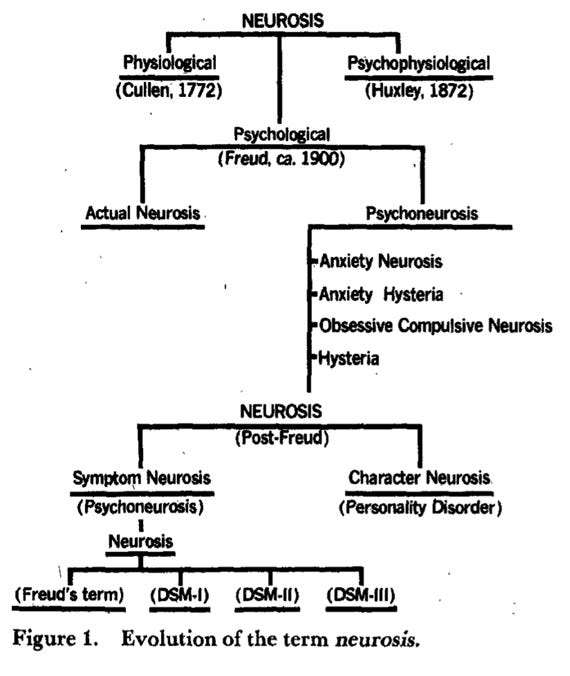In episode 4, Chris and Emma were joined again by Dąbrowski archivist, Bill Tillier. Bill talked about neuroses and psychoneuroses from a historical perspective and then tied them to Dąbrowski’s views. Anxiety and depression were discussed in light of the theory of positive disintegration and their developmental implications.
Instead of our usual list of links in the show notes, for this episode, we’re glad to share the following notes from Bill. The quotations he’s shared are from Dąbrowksi’s books:
Multidimensionality – a broad view
The levels of mental development can be defined with respect to such properties as: typological characteristics; instincts; intelligence; social, moral, religious and aesthetic emotions; inner psychic milieu; volition; creativity; and mental disturbances. On the basis of observation and clinical tests we should be able to place these properties in the sequence of developmental transformations of an individual. 1970, p. 99
Multilevelness – hierarchy; a deep view
DEVELOPMENTAL POTENTIAL. The constitutional endowment which determines the character and the extent of mental growth possible for a given individual. The developmental potential can be assessed on the basis of the following components: psychic overexcitability (q.v.), special abilities and talents, and autonomous factors (notably the Third factor). 1972, p. 293
1970 title – Mental growth through positive disintegration
Without nervousness and neuroses there is no positive disintegration, and without positive disintegration there seems to be no positive development. 1972, p. 159
Overexcitability and nervousness are synonymous:
PSYCHIC OVEREXCITABILITY. Higher than average responsiveness to stimuli, manifested either by psychomotor, sensual, emotional (affective), imaginational, or intellectual excitability, or the combination thereof. 1972, p. 303
NERVOUSNESS. Enhanced psychic overexcitability in the form of excitability of movements, senses, affect, imagination, and intellect. Nervousness does not in any way entail the impairment of mental functions. 1972, p. 299
According to our theory accelerated psychic development is actually impossible without transition through processes of nervousness and psychoneuroses, without external and internal conflicts, without maladjustment to actual conditions in order to achieve adjustment to a higher level of values (to what “ought to be”). 1972, p. 220
1972 title – Psychoneurosis is not an illness
Neuroses – a common definition
A relatively mild mental illness that is not caused by organic disease, involving symptoms of stress (depression, anxiety, obsessive behaviour, hypochondria) but not a radical loss of touch with reality.
NEUROSIS. Psychophysiological or psychosomatic disorders characterized by a dominance of somatic processes. There are no detectable organic defects, although the functions may be severely affected. 1972, p. 299
Lower forms of neuroses – somatic neuroses, neuroses of specific organs, hypochondria, neurasthenia, and lower levels of hysteria. 1970, p. 100
According to Freud (1943), the conflict between the “ego” and the “id” results in neurosis.
Freud also saw neurosis as caused by a superego which is making unrealistic and too severe moral demands on the individual.
Today, neurosis still has a negative connotation: Neuroticism, one of the Big 5 personality traits, is typically defined as a tendency toward anxiety, depression, self-doubt, and other negative feelings. All personality traits, including neuroticism, exist on a spectrum—some people are just much more neurotic than others. In the context of the Big 5, neuroticism is sometimes described as low emotional stability or negative emotionality.
PSYCHONEUROSIS. A more or less organized form of growth through positive disintegration. Lower psychoneuroses are predominantly psychosomatic in nature – digestive, cardiovascular (fainting) dermatological, higher psychoneuroses are highly conscious internal struggles whose tensions and frustrations are not anymore translated into somatic disorders. 1972, p. 303
The level of psychoneuroses is determined by the level of the mental functions that are involved.
Lower interneurotic levels include – neurasthenia, hysteria, hypochondria, somatic neuroses
Higher neurotic levels – the following psychoneuroses: psychasthenia, anxiety neurosis, depression neurosis, obsession and infantile neurosis, etc. 1970, p. 86
Hierarchy of psychoneuroses (see 1970, pp. 98-100)
Level I – no mental disequilibrium no psychoneuroses
Disintegration – mental disequilibrium
Level II – lower neurosis, psychoneuroses / mental disequilibrium
Level III – psychoneuroses / mental disequilibrium
Level IV – higher psychoneuroses / mental disequilibrium
Level V – no mental disequilibrium or psychoneuroses
Notes:
– Every level of development has a corresponding level of mental disturbances.
– The dynamism of autopsychotherapy controls and transforms mental disturbances as development occurs.
An interneurotic scale of psychoneuroses (see 1970, pp. 98-100)
Lower
somatic neuroses,
hypochondria,
neurasthenia,
hysteria,
depressive psychoneurosis,
anxiety psychoneurosis,
infantile psychoneurosis,
obsessive psychoneurosis,
psychasthenia.
Higher
1 Interneurotic Levels. The different kinds of psychoneurosis characteristic of different levels of development
2 Intraneurotic differences involve higher and lower levels of functions within the same kind of psychoneurosis Lower levels are characterized by predominant somatic control while higher levels by predominant mental control. 1972, p. 297
(Source for Figure 1: Townsend, J. S., & Martin, J. A. (1983). Whatever happened to neurosis? An overview. Professional Psychology: Research and Practice, 14(3), 323–329. https://doi.org/10.1037/0735-7028.14.3.323)
In summary, we have a continuum from neurosis to psychoneurosis. At the lower end, neuroses are more physical, more unconscious, and more automatic and at the higher end, psychoneuroses are more psychological, more conscious, and more under the volitional control of the person.
References
Dabrowski, K. (With Kawczak, A., & Piechowski, M. M.). (1970). Mental growth through positive disintegration. Gryf.
Dabrowski, K. (1972). Psychoneurosis is not an illness: Neuroses and psychoneuroses from the perspective of positive disintegration. Gryf.
* A transcript of this episode is available on the Dabrowski Center website.
Connect with us!
Positive Disintegration on Substack
Visit the Dabrowski Center website
The Positive Disintegration YouTube Channel
Adults with Overexcitabilities group on Facebook
Dabrowski Center and Positive Disintegration Podcast Community on Facebook
The Tragic Gift blog by Emma
Email us at positivedisintegration.pod@gmail.com
Please consider supporting the podcast to help fund this work through the Dabrowski Center, a 501(c)(3) nonprofit organization.
Find Positive Disintegration Merch
If you enjoyed this episode on Apple or Spotify, please remember to click on the stars and leave a rating or write a review. Thank you! <3
















Depression and Anxiety in Development